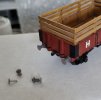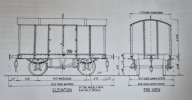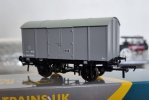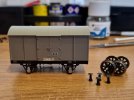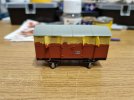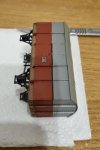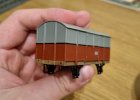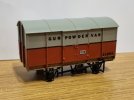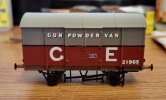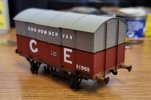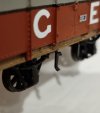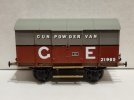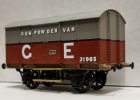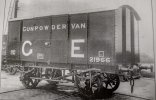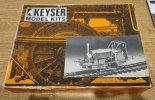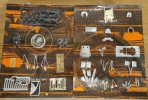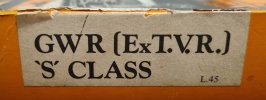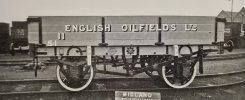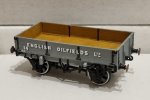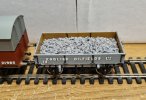Well, Part 3 has come about sooner than I expected! Turns out I'm pretty in tune with these vans and what needs doing to them now, so I was able to add another example to the rostrum quite quickly!
So, having created four variants from the Oxford Rail vans already, what else could I possibly create using them? Well, in 1905, order D59 was placed for 100 Dia.47 vans; however, six of these were to become meat vans, using the Dia.47 as a basis but with a few modifications. Numbered 31395 to 313400, the only visual differences on these new vans were the fitting of two pairs of torpedo vents, a Westinghouse through pipe and screw couplings. These were christened as Dia.74.
The first thing I did was correct the Morton clutch error, which I posted about recently when I did it. The solebar was painted French grey and weight was added to the chassis. This was then set aside whilst I focused on the body.
I removed the running number and then masked the roof, using landmarks such as the bodyside uprights to get the correct position of the torpedo vents. I drilled out the holes for these and fitted them accordingly, as can be seen below:
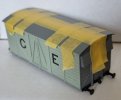
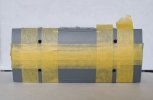
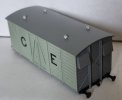
I then fitted some Westinghouse pipes to the ends; the position of these having been a discussion between myself and
@Herb Garden where we believed these to be to the left of the draw hook as you look end on, in keeping with how the GER used this arrangement on it's locos. After much searching, I found reference to a gas holder wagon (Tatlow) which was Westinghouse fitted from new and this too had its pipe to the left of the draw hook. As such, this is the arrangement I have gone with:
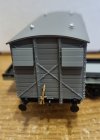
All that was left then was lettering and painting. I confess to using a generic font (Franklin Heavy 2mm, Fox Transfers) for the lettering, but it is one that is close enough to matching the GE style and with no alternative option, this works for me! With only six examples to choose from, I settled on GE 31398, simply because I hadn't lettered anything with an 8 in its number yet!
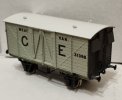
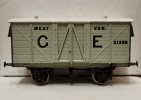
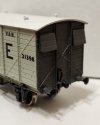
So there we are! Five GE vans that can be modelled using the Oxford Rail van as a basis. I have one left that remains untouched but this will probably just have the corrections done and be kept as a standard Dia.72.
Hopefully this has been as interesting a conclusion to this topic for you as it was for me in modelling it. I quite enjoyed this one, I must say!
- James








